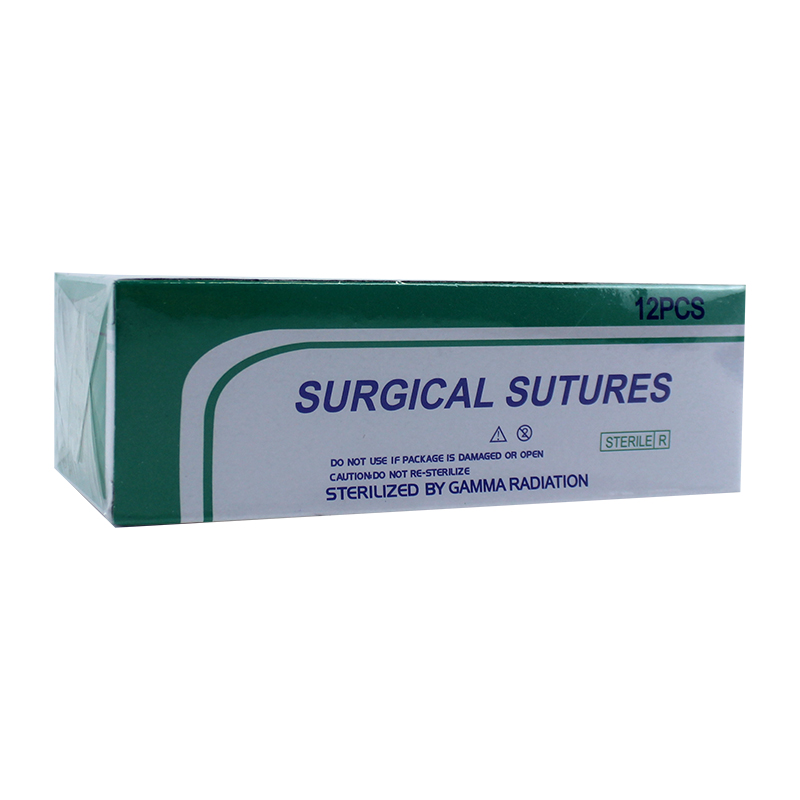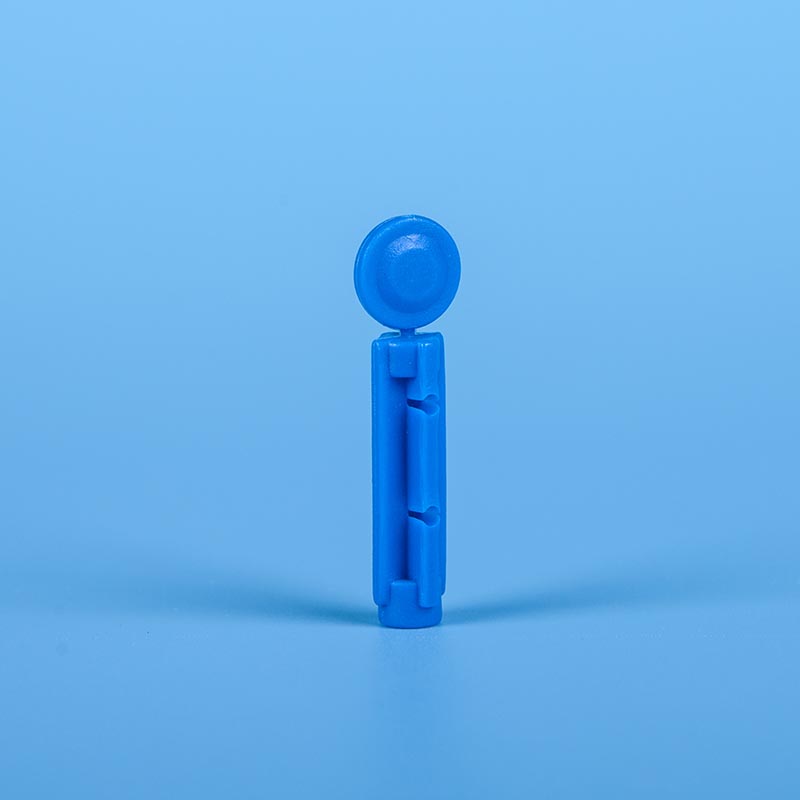Follow these steps to allow for proper healing
Dissolvable stitches are medical sutures that disintegrate as your incision or wound heals. They do not need to be removed but are absorbed by the body over a few months. This makes them ideal for closing internal incisions and deep wounds. China Suture Forceps Factories

Also known as absorbable sutures, dissolvable stitches are made from synthetic polymers that degrade over time. Care for dissolvable stitches like you would other stitches: Keep them clean, but avoid soaking them until the incision is healed. Do not pull out dissolvable stitches without first talking to your healthcare provider.
This article discusses dissolvable stitches. It explains when your healthcare provider might use dissolvable stitches and how to care for them.
Dissolvable stitches are an alternative suture material, a sterile thread that is used to sew wounds and incisions shut.
Traditional suture material used to repair cuts is made of silk, nylon, or polypropylene. The stitches are left in place for several days or a few weeks. Once the tissue begins to heal, your healthcare provider will remove the stitches to keep them from growing into new, healthy skin. The primary benefit of dissolvable stitches is they don’t have to be removed. They are made from a unique biodegradable material that the body absorbs during the healing process.
Research also shows dissolvable stitches are better at preventing the reopening of surgical incisions (wound dehiscence).
Absorbable sutures may also offer better cosmetic results and help prevent hypertrophic (thick and raised) scarring.
Dissolvable stitches are used for reconnecting tissue, including deep layers of skin, muscle, fascia , and mucous membranes. They are used for:
However, not all cuts, wounds, and incisions are good candidates for dissolvable stitches. They are not typically used for repairing tendons, ligaments, or blood vessels or for superficial skin wounds that may be taped or glued closed.
Most superficial cuts are repaired with non-dissolvable suture material. Non-dissolvable stitches are usually preferred for this type of injury because they’re stronger than dissolvable stitches and won’t come out before the healing process is complete.
Very deep wounds, however, are often better candidates for dissolvable stitches. In these cases, dissolvable stitches may be used to repair the deeper layers of tissue.
When a surgeon makes an incision, they cut through more than the skin. They also cut through the fat underneath your skin and sometimes through muscle and other tissues.
Your surgeon may close the deeper parts of the incision with dissolvable stitches and then use more stitches or staples on your skin’s surface. They might also use another type of closure, such as adhesive strips or surgical skin glue.
The type of suture your doctor uses depends on a few things, including:
Dissolvable stitches vary widely in both strength and the amount of time they take for your body to absorb. They are rated by how long they retain their strength to hold the tissue closed and how long they take to dissolve and be absorbed by the body.
How long dissolvable stitches last depends on the type. Common types include:
When used in oral surgery, stitches usually dissolve in a week to 10 days. Stitches used to close up a surgical incision, such as a C-section or hip replacement, take about six weeks to dissolve.
During this time, you may be able to feel the stitches under the skin. Sometimes, though, what you feel is scar tissue, which is typical for a surgical incision.
Once the stitches dissolve, you won’t be able to feel them. If you cannot feel the sutures, and the incision remains closed and does not show signs of infection, there is no need to worry.
In most cases, you’ll be able to shower 24 hours after you receive your stitches, but you should avoid soaking, bathing, and swimming until your incision is fully closed.
The best way to clean your incision is to clean from the “dirtiest” part to the “cleanest” part. That usually means you should start at the center of your incision and move out.
Gently wash your incision in the shower, just like you would wash any other part of your body. Use a mild soap and water to clean your incision.
You should never scrub your incision. Doing so can be very irritating to the healing skin. It can also make it harder for your wound to close.
Follow your healthcare provider’s instructions for caring for your stitches. Always wash your hands before touching the incision or wound to prevent infection.
Inspect your wound daily for signs of infection or drainage from your injury. Signs of infection may include:
Once the wound or incision begins to heal, a scab will form. It is important to leave scabs alone and take care not to scratch, scrub, or otherwise disturb them.
The area can also become itchy as it heals. Do not apply cream, lotion, or ointments unless your doctor has instructed you to. You can keep the skin covered to keep yourself from scratching it. Applying an ice pack can also calm an itch.
Dissolvable stitches are treated fairly similarly to regular sutures. In addition to not scratching, scrubbing, picking, or submerging it in water, also avoid using hydrogen peroxide with dissolvable stitches.
Research has shown that peroxide may reduce the strength of some sutures. Therefore, you should ask your surgeon if it’s safe to clean your surgical incisions with hydrogen peroxide before doing so.
In addition to possibly weakening the sutures, peroxide is too harsh for most incisions. It can cause irritation and be harmful to wounds.
Like with other stitches, do not try to pull them out at home. If a stitch appears to come loose, check with your healthcare provider.
Dissolvable stitches are as safe as traditional sutures or staples. Research shows low rates of infection or other complications with dissolvable stitches that are comparable to non-dissolvable sutures.
The one risk associated with dissolvable stitches is an increased inflammatory response, which may delay wound healing.
This immune system reaction to a foreign body is marked by higher levels of pro-inflammatory markers without anti-inflammatory markers to counterbalance it. While this can delay healing, the risk is generally low and can occur with traditional stitches as well.
Dissolvable stitches are a convenient way to suture wounds and incisions. Unlike regular stitches that require removal, your body absorbs dissolvable stitches so that they do not require removal.
To care for dissolvable stitches, wash with a gentle cleanser. Avoid scrubbing, picking at scabs, and cleaning with hydrogen peroxide.
Gierek M, Kuśnierz K, Lampe P, et al. Absorbable sutures in general surgery—review, available materials, and optimum choices. Pol Przegl Chir. 2018;90(2):34-37. doi:10.5604/01.3001.0010.5632
Forsch RT, Little SH, Williams C. Laceration repair: a practical approach. Am Fam Physician. 2017;95(10):628-636.
Koskela A, Kotaluoto S, Kaartinen I, Pauniaho SL, Rantanen T, Kuokkanen H. Continuous absorbable intradermal sutures yield better cosmetic results than nonabsorbable interrupted sutures in open appendectomy wounds: a prospective, randomized trial. World J Surg. 2014;38(5):1044–50. doi:10.1007/s00268-013-2396-8
Sajid MS, McFall MR, Whitehouse PA, Sains PS. Systematic review of absorbable vs non-absorbable sutures used for the closure of surgical incisions. World J Gastrointest Surg. 2014;6(12):241–7. doi:10.4240/wjgs.v6.i12.241
Goto S, Sakamoto T, Ganeko R, Hida K, Furukawa TA, Sakai Y. Subcuticular sutures for skin closure in non-obstetric surgery. Cochrane Database Syst Rev. 2020;4(4):CD012124. doi:10.1002/14651858.CD012124.pub2
Byrne M, Aly A. The surgical suture. Aesthet Surg J. 2019;39(Suppl_2):S67-S72. doi:10.1093/asj/sjz036
NHS. Care of the mouth after a surgical procedure.
Johns Hopkins Medicine. Hip replacement recovery: Q&A with a hip specialist.
NHS. Caesarean section wound care.
American Academy of Family Physicians. Caring for your incision after surgery.
Cawthorne DP, Castillo TE, Sivakumar BS. Effect of commonly used surgical solutions on the tensile strength of absorbable sutures: an in-vitro study. ANZ J Surg. 2021;91(7-8):1451-1454. doi:10.1111/ans.16908
Johns Hopkins Medicine. Everyday cuts and scrapes: how to prevent scarring.
Lee A, Stanley GHM, Wade RG, et al; CANVAS collaborative. International, prospective cohort study comparing non-absorbable versus absorbable sutures for skin surgery: CANVAS service evaluation. Br J Surg. 2023;110(4):462–70. doi:10.1093/bjs/znad008
Lock AM, Gao R, Naot D, Coleman B, Cornish J, Musson DS. Induction of immune gene expression and inflammatory mediator release by commonly used surgical suture materials: an experimental in vitro study. Patient Saf Surg. 2017;11:16. doi:10.1186/s13037-017-0132-2
By Jennifer Whitlock, RN, MSN, FN Jennifer Whitlock, RN, MSN, FNP-C, is a board-certified family nurse practitioner. She has experience in primary care and hospital medicine.
Thank you, {{form.email}}, for signing up.
There was an error. Please try again.

China Polypropylene Suture Suppliers By clicking “Accept All Cookies”, you agree to the storing of cookies on your device to enhance site navigation, analyze site usage, and assist in our marketing efforts.